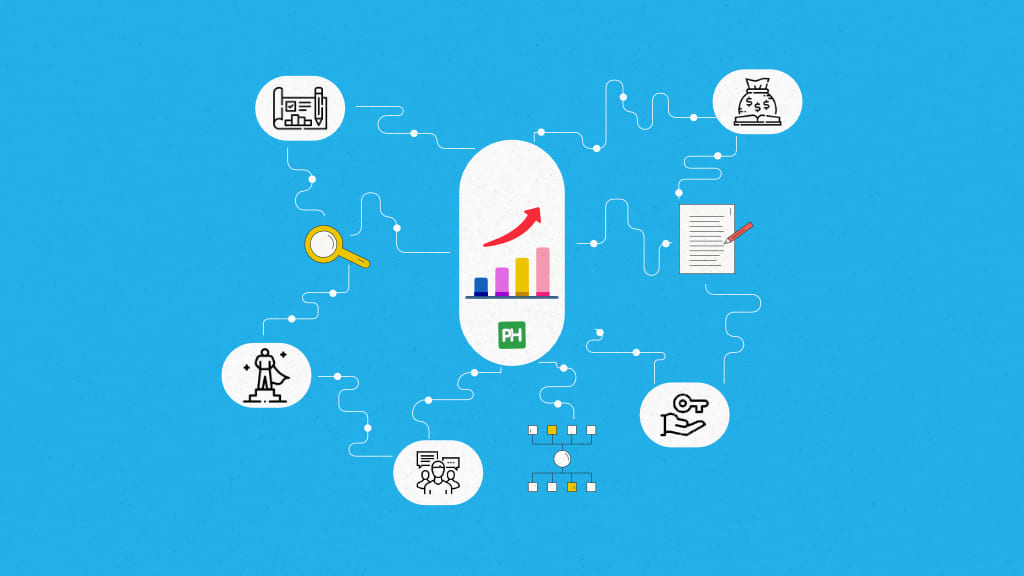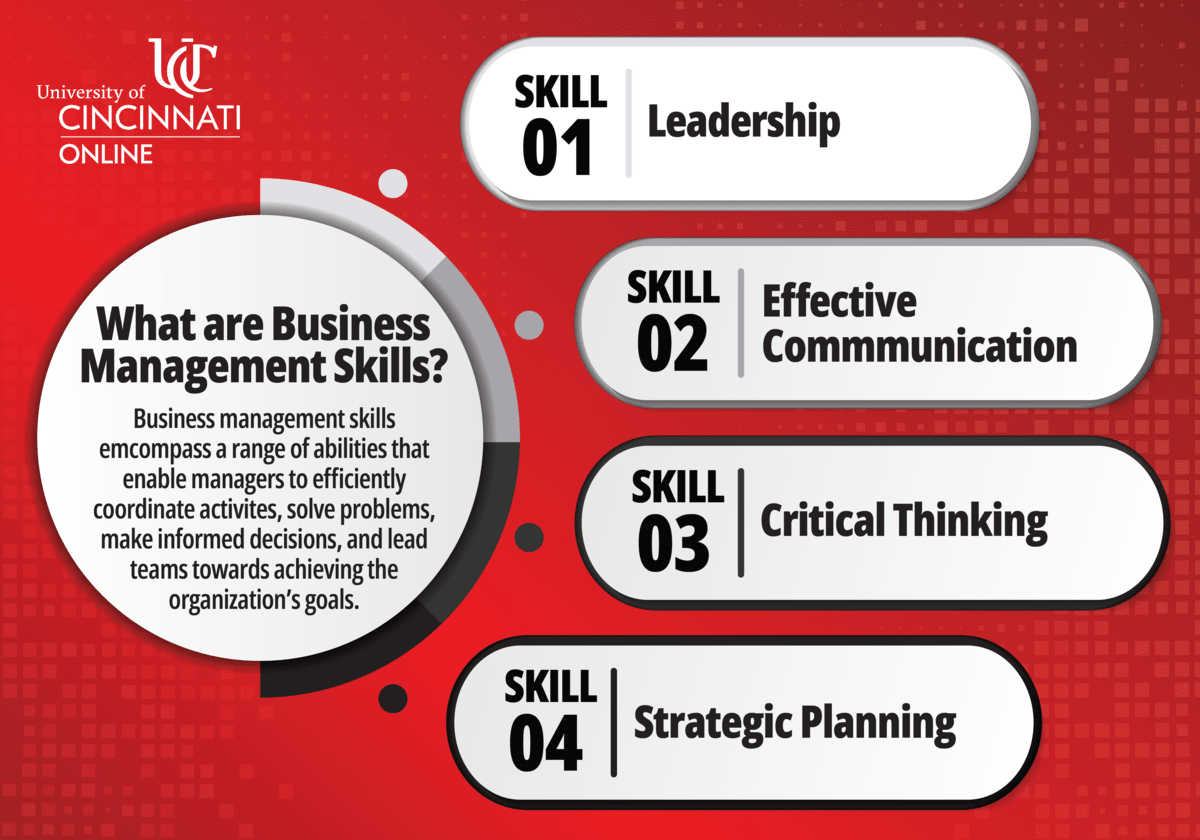Enhance Your Portfolio with SAFe Lean Portfolio Management Techniques
Enhance Your Portfolio with SAFe Lean Portfolio Management Techniques
Blog Article
SAFe Certification: Equipping Leaders in Scaled Agile Frameworks
The landscape of project administration is evolving, and SAFe Certification stands as a pivotal element for leaders seeking to execute the Scaled Agile Framework efficiently. This accreditation outfits specialists with crucial skills to cultivate partnership and advancement within their teams, eventually improving business efficiency. The trip to ending up being a licensed SAFe leader entails more than simply obtaining understanding; it includes understanding the nuanced roles and obligations within dexterous environments. As we check out the complexities of SAFe Certification, the effects for management efficiency and business success warrant deeper evaluation.
Comprehending SAFe Certification
SAFe certification, which means Scaled Agile Framework accreditation, is a credentialing program developed to gear up experts with the understanding and abilities essential to execute nimble techniques at scale within their organizations. The SAFe structure offers an organized strategy that helps companies straighten their groups and manage bigger projects effectively, making sure that dexterous methodologies are used constantly across different degrees.
The certification encompasses various functions, consisting of SAFe Agilist, SAFe Expert, and SAFe Program Consultant, each concentrating on various elements of the framework. The program highlights the importance of lean concepts, continuous shipment, and collaboration among teams, cultivating an environment conducive to development and efficiency.
Individuals undergo extensive training that integrates academic knowledge with practical application, enhancing their capability to lead active changes. The educational program includes topics such as dexterous groups, program implementation, and profile management, making certain that certified professionals are fluent in all elements of the SAFe technique.
Advantages of SAFe Certification
Getting a SAFe qualification provides many benefits for professionals seeking to enhance their careers in agile job monitoring. It gears up people with a detailed understanding of the Scaled Agile Framework, allowing them to effectively carry out nimble principles throughout big companies. This knowledge is critical as businesses significantly embrace agile techniques to enhance efficiency and flexibility.
Additionally, SAFe qualification boosts a prospect's marketability and profession prospects. As organizations seek licensed specialists to lead their agile makeovers, certified individuals can command higher incomes and stand out in an affordable task market. Getting this accreditation shows a dedication to continuous understanding and professional advancement, which is very related to by companies.
Networking opportunities additionally occur from SAFe qualification, attaching individuals with a neighborhood of similar specialists and sector leaders. This can result in knowledge, mentorship, and partnership sharing, additional enhancing one's specialist experience.
Lastly, certified experts are frequently much better furnished to cultivate a society of collaboration and development within their groups, driving effective end results in agile tasks. Generally, the benefits of SAFe certification are manifold, making it an important investment for those in the dexterous job management domain name.
The Certification Refine
The trip to attaining SAFe accreditation includes an organized process made to guarantee prospects are well-prepared for nimble management duties. This process typically starts with choosing the suitable SAFe qualification that lines up with one's job goals and business needs, such as SAFe Agilist, SAFe Expert, or SAFe Program Professional.
Prospects are then encouraged to join an extensive training program, usually performed by an accredited SAFe trainer - SAFe DevOps certification. These programs cover crucial ideas, concepts, and practices of the Scaled Agile Structure, giving individuals with valuable insights and useful understanding
Following the training, prospects should pass a certification exam to show their understanding and competence in applying SAFe concepts. The examinations are made to assess not only understanding but additionally the capability to apply nimble techniques properly within a scaled atmosphere.
As soon as accredited, people get to a wealth of sources, consisting of area networks and recurring understanding chances, which additionally improve their agile management capacities. Keeping qualification needs constant expert growth, ensuring that leaders remain current with developing techniques within the framework. Inevitably, the qualification procedure is an extensive yet rewarding pathway for those intending to stand out in dexterous leadership.
Duties and Duties
Efficient application of the Scaled Agile Structure (SAFe) counts heavily on clearly specified roles and duties within a company. These duties are vital for making sure alignment, effectiveness, and effective cooperation throughout teams.
At the team degree, essential functions consist of the Scrum Master, Item Proprietor, and Agile Group Members. The Scrum Master facilitates the dexterous process, making sure that the team sticks to the SAFe concepts while getting rid of impediments.
At the program degree, the Release Train Engineer (RTE) plays a crucial role in orchestrating the Agile Launch Train (ART), making certain smooth program implementation and alignment throughout several groups. In addition, the system architect and local business owner give technical assistance and calculated vision, respectively.
Constant Enhancement in SAFe
Continual improvement is a keystone of the Scaled Agile Structure (SAFe), driving organizations to improve their procedures, items, and overall efficiency. By promoting a society of constant improvement, SAFe motivates groups to regularly analyze their operations and end results, determine ineffectiveness, and execute methods for improvement. This repetitive process not just increases productivity but likewise aligns teams with the organization's critical goals.
Central to this strategy are the Inspect and Adapt (I&A) workshops, which supply organized possibilities for representation and learning. Throughout these sessions, groups evaluate performance metrics, discuss challenges, and create actionable insights to direct future versions. Additionally, the usage of Agile Release Trains (ARTs) facilitates cross-functional cooperation, making it possible for teams to share ideal practices and drive cumulative enhancement.
Furthermore, Lean-Agile leadership plays an important function in advertising a way of thinking of continual enhancement. Leaders are entrusted with cultivating an environment where trial and error is encouraged, and failings are deemed discovering opportunities. By installing continual renovation right into the organizational society, SAFe equips groups to remain responsive and nimble to transforming market demands, ultimately improving their capacity to deliver worth to customers.

Conclusion
Finally, SAFe Accreditation functions as an important tool for leaders aiming to carry out dexterous techniques effectively within their organizations. By promoting an extensive understanding of the Scaled Agile Structure, this certification boosts collaboration, innovation, and task outcomes. It opens opportunities for specialist growth and networking among sector experts, making certain that licensed experts continue to be skilled in navigating the intricacies of today's dynamic company landscape. Ultimately, SAFe Certification adds substantially to organizational success and durability.
The landscape of task administration is evolving, and SAFe Certification stands as a critical element for leaders seeking to apply the Scaled Agile Framework successfully.Getting a Risk-free certification provides numerous benefits for specialists looking to enhance their professions in active task management. The Scrum Master assists in the dexterous process, making certain that the group sticks to the SAFe principles while removing impediments. By embedding continual renovation into the organizational society, SAFe encourages groups to stay responsive and nimble to altering market demands, inevitably enhancing their capability to provide value to consumers.

|
Master Agile Practices Via Comprehensive SAFe Qualification
In an increasingly complex company landscape, grasping Active practices through thorough SAFe accreditation has actually arised as an important proficiency for professionals aiming to enhance organizational performance. This accreditation not just supplies a deep understanding of the Secure framework however likewise cultivates vital abilities for fostering collaboration and alignment among teams. As companies look for to browse the difficulties of rapid modification, the application of SAFe principles offers a path to boosted end results. The trip to certification entails even more than just theoretical knowledge; it needs a strategic strategy to application that can substantially affect company dexterity. Leading SAFe. What does this entail?
Understanding SAFe Structure

At its core, the SAFe structure comprises 4 degrees: Group, Program, Huge Remedy, and Portfolio. Each level addresses details elements of Agile distribution, from handling little groups of designers to managing several programs and straightening tactical initiatives with organization purposes.
SAFe motivates collaboration amongst cross-functional groups, cultivating an environment where continual improvement and advancement are vital. By emphasizing alignment, openness, and built-in quality, the framework furnishes companies to react swiftly to market changes while delivering value to clients.
Moreover, SAFe sustains different methods, such as Scrum and Kanban, allowing organizations to tailor their approach according to particular project requirements. This versatility makes SAFe a robust framework for organizations aiming to thrive in a swiftly progressing organization landscape.
Advantages of SAFe Accreditation
Frequently demanded in the Agile community, Risk-free accreditation offers numerous benefits for companies and professionals alike. Among the main advantages is the improvement of abilities and understanding in carrying out the Scaled Agile Structure (Secure), which furnishes people with the devices needed to drive effective Agile makeovers. This accreditation indicates a commitment to specialist advancement, making prospects a lot more affordable in the task market.
For companies, having actually licensed specialists promotes a society of constant improvement and collaboration, essential for adjusting to altering market needs. It makes it possible for teams to straighten their work with tactical objectives, inevitably enhancing efficiency and performance. Companies with a higher percentage of SAFe-certified staff members frequently experience lowered time-to-market and raised top quality of deliverables.
Furthermore, Risk-free certification facilitates networking opportunities with other Agile specialists, enabling the exchange of ideal methods and experiences (SAFe DevOps certification). This collective network can substantially add to business and personal development. In summary, obtaining Risk-free certification not only improves private capabilities yet also strengthens the general Agile maturation of an organization, leading to lasting success in today's dynamic organization atmosphere
Key Elements of SAFe
Building on the advantages of SAFe qualification, comprehending the key parts of the Scaled Agile Framework is crucial for successfully implementing its principles. The SAFe structure comprises four main degrees: Team, Program, Huge Service, and Profile. Each level addresses various elements of agile practices, helping with placement and delivery across the organization.
At the Group degree, cross-functional teams function collaboratively utilizing Nimble methods, such as Scrum or Kanban, to supply step-by-step worth. The Program level concentrates on the Agile Release Train (ART), which is a long-lived group of Agile teams that intends, commits, and executes together. The Large Service degree addresses complex options that call for multiple ARTs to work in performance, making certain sychronisation and assimilation.
Getting Ready For SAFe Qualification
Getting ready for Risk-free certification requires a critical technique to make certain a comprehensive understanding of the structure. Initially, acquaint yourself with the core concepts and worths of the Scaled Agile Structure (SAFe) Testimonial sources given on the Scaled Agile site, consisting of the SAFe framework documentation, situation researches, and whitepapers, to build a solid foundation.
Next, consider signing up in a main SAFe training program. These training courses, led by licensed SAFe Program Consultants (SPCs), deal structured learning experiences that cover crucial concepts and functional applications. Involving with instructors and peers can enhance your grasp of the product.
In addition, method with example exam inquiries to acquaint on your own with the format and sorts of questions you might run into. Joining research study groups or discussion forums can promote knowledge exchange and provide support from fellow prospects.
Applying SAFe in Organizations
Executing the Scaled Agile Framework (Risk-free) within companies my explanation necessitates an organized technique that straightens teams and processes toward an usual objective. The effective application of SAFe starts with developing a clear understanding of its principles, including partnership, positioning, and transparency. Organizations has to initially assess their current procedures and identify areas for improvement, ensuring they await the social change that SAFe involves.
Next, management dedication is important. Management has to proactively sustain the shift by advertising a culture of constant learning and flexibility. Training and accreditation for teams assist furnish participants with the needed abilities and understanding to operate properly within the Risk-free structure. This includes establishing Agile Launch Trains (ARTs), which function as the backbone for supplying worth across the company.
Regular preparation sessions, such as Program Increment (PI) preparation, need to be conducted to prioritize and synchronize groups work. Furthermore, leveraging metrics to gauge progress and efficiency is vital for ongoing enhancement. By continually using Risk-free concepts and techniques, organizations can achieve higher agility, enhance cooperation, and inevitably drive better organization results. Accepting this framework placements organizations to react swiftly to market changes and client needs.

Final Thought
In final thought, understanding Active practices through detailed Secure accreditation substantially enhances expert abilities and contributes to organizational effectiveness. The understanding acquired from understanding the Risk-free structure, along with its vital elements, enhances and assists in effective changes cooperation among groups.
The SAFe (Scaled Agile Framework) framework serves as an organized strategy for implementing Dexterous methods at scale across huge companies. One of the main advantages is the enhancement of abilities and knowledge in executing the Scaled Agile Framework (Risk-free), which gears up people with the tools essential to drive successful Agile improvements. In recap, acquiring Secure accreditation not just enhances private capabilities but also enhances the overall Agile maturation of a company, leading to sustainable success in today's vibrant company setting.
Building on the advantages of SAFe qualification, understanding the essential components of the Scaled Agile Framework is important for successfully applying its concepts.Executing the Scaled Agile Structure (SAFe) within organizations necessitates an organized method that aligns groups and processes towards a typical objective.
|
Breakthrough Your Profession With SAFE Accreditation: Agile Expertise Unlocked
In today's quickly advancing organization landscape, acquiring SAFe qualification can substantially improve your job trajectory by outfitting you with vital dexterous expertise. This accreditation not only works as a testament to your effectiveness in nimble methodologies but additionally settings you as a driver for business modification. As companies increasingly look for experts who can lead nimble improvements, understanding the pathways to obtain this certification ends up being critical. However, the real concern depends on just how this credential can distinctly affect your occupation and open unexpected doors in the dexterous domain name.
Recognizing SAFe Accreditation
SAFe Accreditation acts as an essential certification for specialists seeking to improve their careers in agile project monitoring. Developed by Scaled Agile, Inc., the Scaled Agile Structure (Secure) offers a thorough strategy to applying active methods across large companies, making it essential for professionals aiming to navigate complex task environments successfully.
The accreditation procedure encompasses numerous degrees, consisting of Risk-free Agilist, SAFe Specialist, and SAFe Program Expert, each targeting different duties within agile teams. These accreditations are designed to outfit professionals with the knowledge and devices essential to lead agile transformations, foster collaboration throughout groups, and improve job distribution outcomes.
Comprehending Risk-free Qualification entails recognizing its focus on lining up approach with implementation, advertising a culture of continual renovation, and leveraging nimble principles at scale. This framework not just boosts private competencies however additionally contributes to business agility, enabling companies to react quickly to market modifications and client demands.
Attaining Risk-free Certification signifies a dedication to specialist growth and a strong structure in dexterous techniques, placing people as beneficial assets in their companies. By welcoming this qualification, specialists can improve their ability, guaranteeing they stay competitive in a quickly developing task market.
Benefits of SAFe Certification
Obtaining Secure Qualification offers many benefits for specialists in the nimble task monitoring field. This find here qualification not only boosts individual qualifications but likewise shows a dedication to grasping the Scaled Agile Structure, which is increasingly recognized by companies. With a Secure qualification, specialists can confirm their knowledge and abilities in active approaches, making them extra affordable in the task market.
One of the crucial benefits is the ability to lead dexterous makeovers within companies. Licensed individuals are outfitted with the approaches and tools necessary to carry out and scale nimble techniques effectively, driving performance and efficiency. Companies with SAFe-trained experts usually experience improved positioning across groups, promoting much better cooperation and advancement.
In Addition, Secure Qualification opens up doors to networking opportunities within the agile neighborhood. Professionals can attach with similar individuals, share ideal techniques, and remain updated on market trends. The qualification also offers accessibility to unique sources, consisting of workshops and webinars, which can even more enhance one's proficiency.
Eventually, getting SAFe Accreditation equips professionals to progress their careers, add meaningfully to their companies, and lead the fee in agile quality. SAFe DevOps certification.
Pathways to Acquire Certification

To start, prospects normally take part in a SAFe training course, which offers as the fundamental action for accreditation. These courses are helped with by SAFe Program Specialists (SPCs) and cover important principles, techniques, and functions within the Risk-free framework. After finishing the training, candidates need to pass a certification examination to validate their knowledge and abilities.
There are numerous qualifications available, such as Secure Agilist (SA), SAFe Practitioner (SP), and Secure Scrum Master (SSM), to name a few. Each certification calls for particular training sessions and evaluations, permitting experts to choose a path that lines up with their profession goals.
In addition, preserving Risk-free qualification demands ongoing education and learning and revival, making certain that experts stay existing with developing Agile methods. By tactically selecting the ideal training and qualification courses, individuals can significantly boost their know-how and career trajectory within the Agile landscape.
Real-World Applications of SAFe
Executing the Secure structure in companies has proven to be very effective in enhancing efficiency and alignment across teams. This methodology assists in collaboration among different departments, enabling groups to function towards a combined set of goals. By breaking down silos and cultivating communication, SAFe enables companies to respond quickly to market changes and consumer requirements.

Furthermore, SAFe is crucial in improving project visibility with metrics and reporting tools, enabling stakeholders to make enlightened choices. It also motivates a culture of continual renovation, advertising regular retrospectives and adaptation of methods. Eventually, the real-world applications of SAFe show its flexibility and effectiveness in driving successful outcomes throughout various sectors, making it an important structure for modern companies.
Career Development Opportunities
The fostering of the Secure structure not just improves organizational efficiency however additionally opens up significant profession advancement opportunities for experts within the Agile and project management areas. As companies significantly embrace Agile approaches, the need for SAFe-certified specialists remains to climb, creating an one-upmanship for those equipped with this accreditation.
SAFe qualification provides experts access to a range of duties, consisting of Agile Release Train (ART) roles, Scrum Masters, and Release Train Engineers. Additionally, individuals can transition into management positions such as Program Managers or Portfolio Managers, thereby increasing their duties and influence within the company. The certification also demonstrates a dedication to constant discovering and flexibility, high qualities very valued by companies.
Furthermore, specialists with Risk-free accreditation typically appreciate greater earning possibility. Market records suggest that certified individuals normally regulate salaries that surpass those of their non-certified peers. Additionally, the networking chances afforded by Risk-free communities can bring about valuable links and job potential customers. SAFe For Architects.
Final Thought
Finally, acquiring you could try here SAFe qualification substantially boosts specialist credentials in the world of dexterous methodologies. This certification not only promotes proficiency of active practices however additionally promotes possibilities for career advancement across various duties, including Scrum Masters and Program Supervisors. By equipping individuals with vital skills and knowledge, Secure qualification fosters leadership capacities essential for driving successful active transformations within organizations, eventually adding to higher earning potential and valuable links within the active community.
Getting Risk-free Qualification offers many advantages for professionals in the agile job management arena. With a Risk-free accreditation, professionals can validate their expertise and abilities in active techniques, making them more affordable in the task market.
These courses are assisted in by SAFe Program Experts (SPCs) and cover essential principles, techniques, and duties within the SAFe structure.In verdict, getting Risk-free accreditation significantly improves professional qualifications in the world of agile methodologies. By outfitting individuals with important skills and expertise, Risk-free accreditation cultivates management capacities needed for driving effective dexterous transformations within companies, inevitably contributing to better earning potential and useful connections within the active neighborhood.
} Report this page